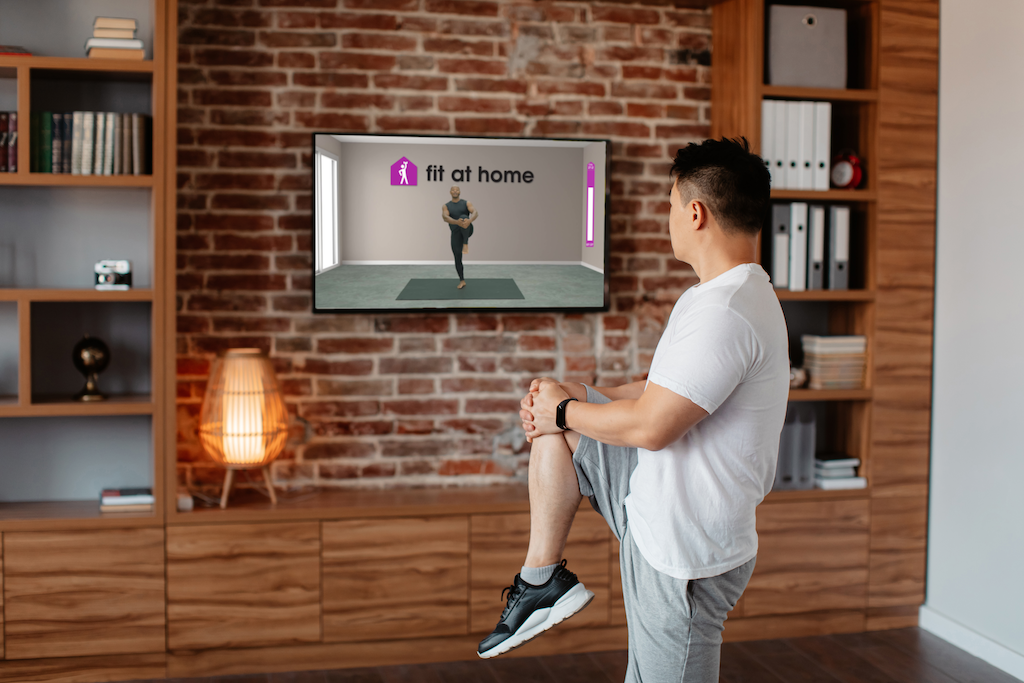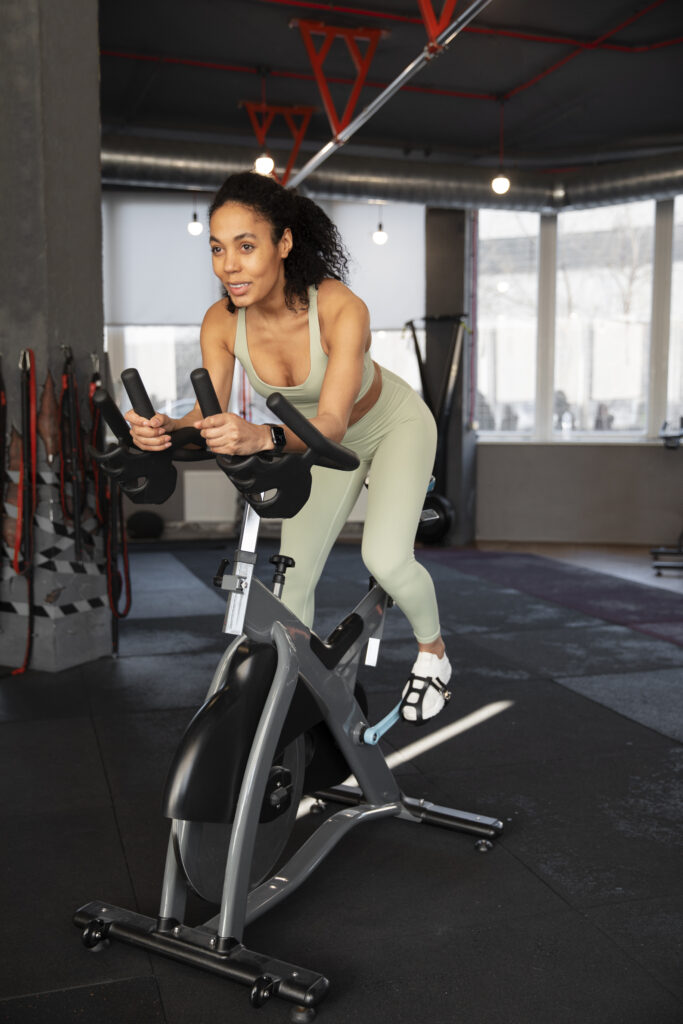We’ve all been there – waking up with a scratchy throat, a runny nose, and the unmistakable signs of a cold. The dilemma then arises: should you push through your workout or take a rest day? While rest is crucial for recovery, moderate exercise can actually be beneficial during a cold, helping to boost your immune system and alleviate symptoms. In this blog post, we’ll explore the dos and don’ts of training with a cold to help you make informed decisions for your fitness routine.
Listen to your body
The first rule of thumb when considering a workout with a cold is to listen to your body. If you’re experiencing symptoms above the neck, such as a runny nose or sore throat, light to moderate exercise may be manageable. However, if you have symptoms below the neck, like chest congestion or body aches, it’s advisable to give your body the rest it needs.

Adjust intensity and duration
When training with a cold, it’s crucial to adjust the intensity and duration of your workout. Instead of pushing for a personal best or a high-intensity session, opt for a lower intensity and shorter duration. Consider activities like brisk walking, yoga, or light weight training to maintain circulation without putting excessive strain on your body.
Stay hydrated
Hydration is always essential, but it becomes even more critical when you’re under the weather. Dehydration can exacerbate cold symptoms and hinder your recovery. Ensure you drink plenty of water before, during, and after your workout. Hydration supports your immune system and helps flush out toxins from your body.
Choose the right environment
Exercising in extreme temperatures can stress your body further. If you’re training with a cold, choose a comfortable environment that is neither too hot nor too cold. Consider indoor activities or opt for a well-ventilated outdoor space. This ensures that your body can focus on healing without the added stress of temperature extremes.

Prioritize recovery
Post-workout recovery is crucial when you’re feeling under the weather. Allocate time for proper stretching and relaxation techniques to prevent stiffness and promote flexibility. Adequate rest and recovery will contribute to a quicker bounce back from your cold.
Know when to rest
While light exercise can be beneficial, there are times when rest is the best option. If your symptoms are severe, or you’re feeling exceptionally fatigued, it’s essential to prioritize rest over exercise. Pushing your body too hard when it needs recovery can prolong illness and hinder your overall fitness progress.

Walking
Walking is a low-impact exercise that can be easily adjusted to your energy levels. A short stroll around your neighborhood or a nearby park can help improve circulation, clear your mind, and provide a gentle cardiovascular workout. If the weather is unfavorable, consider walking indoors at a shopping mall or on a treadmill. Aim for 15-30 minutes of walking to promote blood flow and enhance your overall well-being.
Yoga
Yoga is an excellent choice for exercising with a cold because it combines gentle movement with deep breathing, promoting relaxation and flexibility. Choose a restorative or gentle yoga sequence that focuses on stretching and controlled breathing. Poses like Child’s pose, Cat-cow, and Downward dog can help open up your chest, relieve congestion, and improve circulation. Remember to listen to your body and avoid any poses that feel strenuous.

Pilates & Fit
The Pilates & Fit workouts will improve your balance, flexibility, strength and coördination, while also releasing stress and help your concentration to keep your body & mind in great condition.
Are you ready to join Lewis?
Swimming
If you have access to a pool and feel up to it, swimming can be a refreshing and soothing exercise option. The buoyancy of the water reduces impact on your joints, making it an ideal choice for those with a cold. Swimming can help clear nasal passages and improve breathing. Opt for a slow and relaxed swim, and be sure to keep your session short to avoid overexertion. Don’t forget to take a warm shower afterward to prevent chilling.

Stationary cycling
Cycling on a stationary bike is a low-impact exercise that allows you to control the intensity of your workout. Set the resistance at a comfortable level and pedal at a moderate pace. Cycling helps improve cardiovascular health, and the rhythmic motion can be soothing.
Ensure you stay hydrated during your session and listen to your body. If you start feeling fatigued, it’s okay to cut your workout short.
Training with a cold can be a delicate balance between maintaining your fitness routine and allowing your body the rest it needs to recover. By listening to your body, adjusting your workout intensity, staying hydrated, choosing the right environment, prioritizing recovery, and knowing when to rest, you can navigate exercising with a cold successfully. Always consult with a healthcare professional if you have concerns about your symptoms or if your condition worsens.
Your #1 fitness app available on:

With Fit at Home you can transform your TV into your personal gym. With more than 500 workouts you can work out whenever it suits you and achieve your fitness goals. Whether you want to lose weight, relax with our meditation videos, let your kids exercise more often etc. Our professional trainers will help you become the fittest, healthiest and happiest version of yourself and your family!
The best tips to get better!
Dealing with a cold can be challenging, but there are several strategies to help you feel better and recover more quickly. Here are some tips to help you navigate through a cold:
- Rest and sleep: Allow your body the time it needs to heal by getting plenty of rest. Adequate sleep supports your immune system and helps your body recover more efficiently.
- Stay hydrated: Drink plenty of fluids, including water, herbal teas, and clear broths. Staying hydrated helps soothe a sore throat, keeps you comfortable, and aids in thinning mucus.
- Warm saltwater gargle: Gargling with warm saltwater can help soothe a sore throat and reduce irritation. Mix a teaspoon of salt in a glass of warm water and gargle several times a day.
- Use humidifiers: Humidifiers add moisture to the air, which can be especially helpful if you have a congested nose or irritated throat. Breathing in moist air can ease congestion and make it easier to breathe.
- Nasal saline irrigation: Consider using a saline nasal spray or performing nasal irrigation with a neti pot. This can help relieve nasal congestion and reduce the buildup of mucus.
- Over-the-counter medications: Non-prescription medications like decongestants, pain relievers, and cough suppressants may provide relief. However, always follow the recommended dosage and consult with a healthcare professional if you have any concerns.
- Warm showers: A warm shower or bath can help soothe sore muscles, alleviate congestion, and provide overall comfort. The steam can also help open up nasal passages.
- Eat nutritious foods: Consume a well-balanced diet rich in nutrients to support your immune system. Foods like soups, fruits, vegetables, and warm teas can be soothing and nourishing.
- Vitamin C: While it may not prevent a cold, vitamin C can support your immune system. Incorporate foods high in vitamin C, such as citrus fruits, berries, and leafy greens.
- Avoid smoking and alcohol: Smoking and excessive alcohol consumption can irritate your throat and worsen cold symptoms. It’s advisable to minimize or avoid these substances until you’ve fully recovered.
- Practice good hygiene: Help prevent the spread of the virus by practicing good hygiene. Wash your hands frequently, cover your mouth and nose when you cough or sneeze, and dispose of used tissues promptly.
- Listen to your body: Pay attention to your body’s signals. If you’re feeling fatigued, take a break. Pushing yourself too hard can hinder the recovery process.
If your symptoms persist, worsen, or if you have concerns about your health, it’s essential to consult with a healthcare professional for personalized advice and treatment.